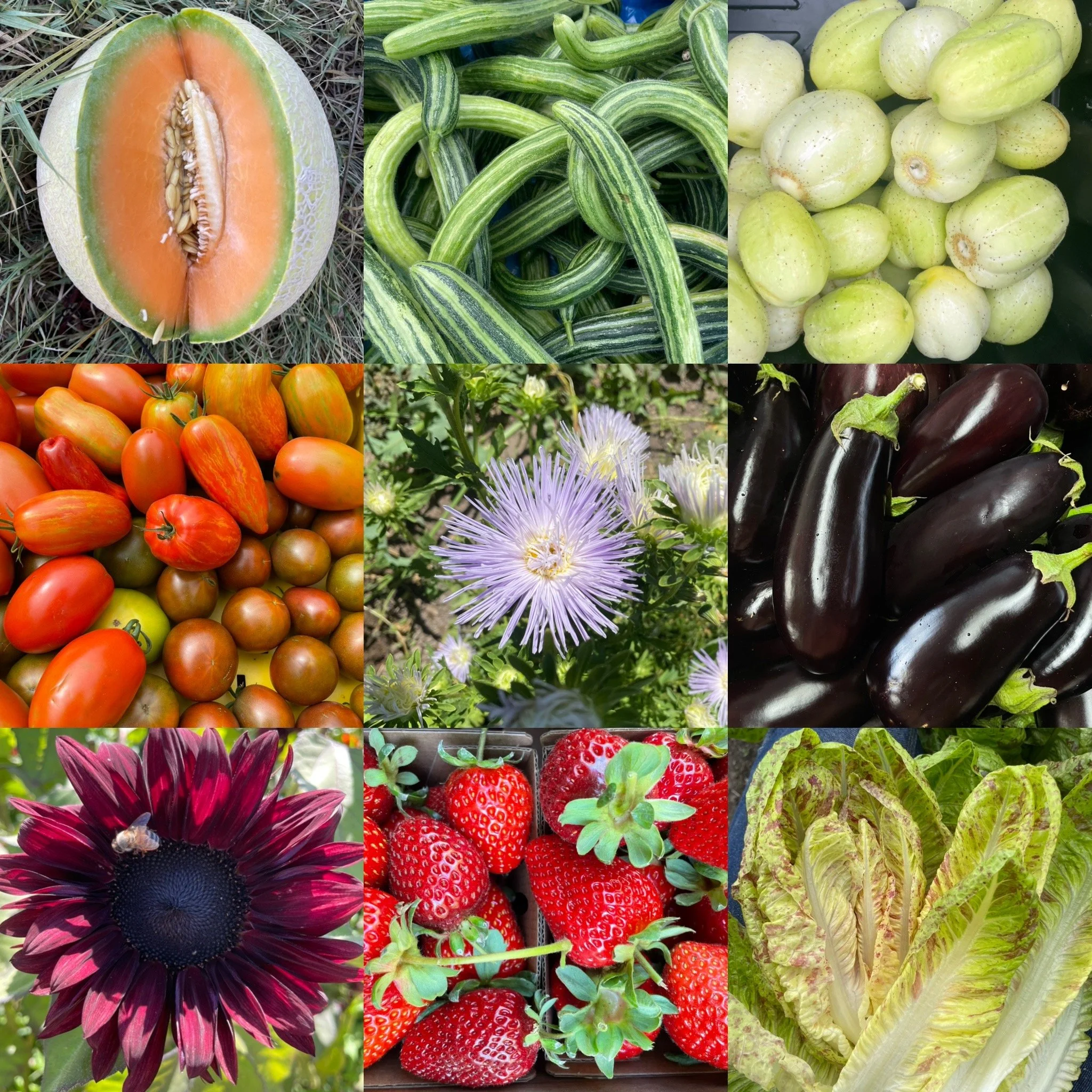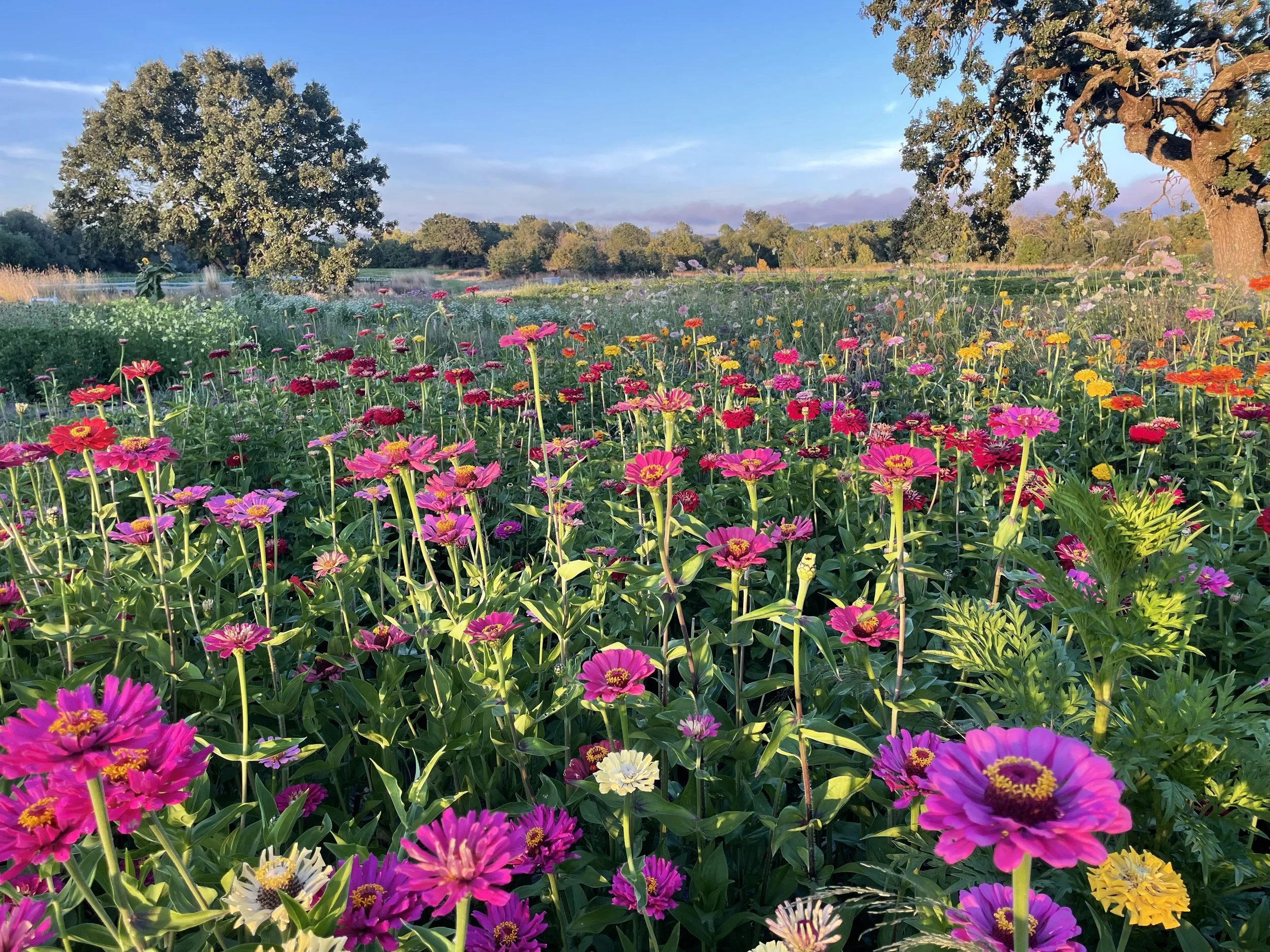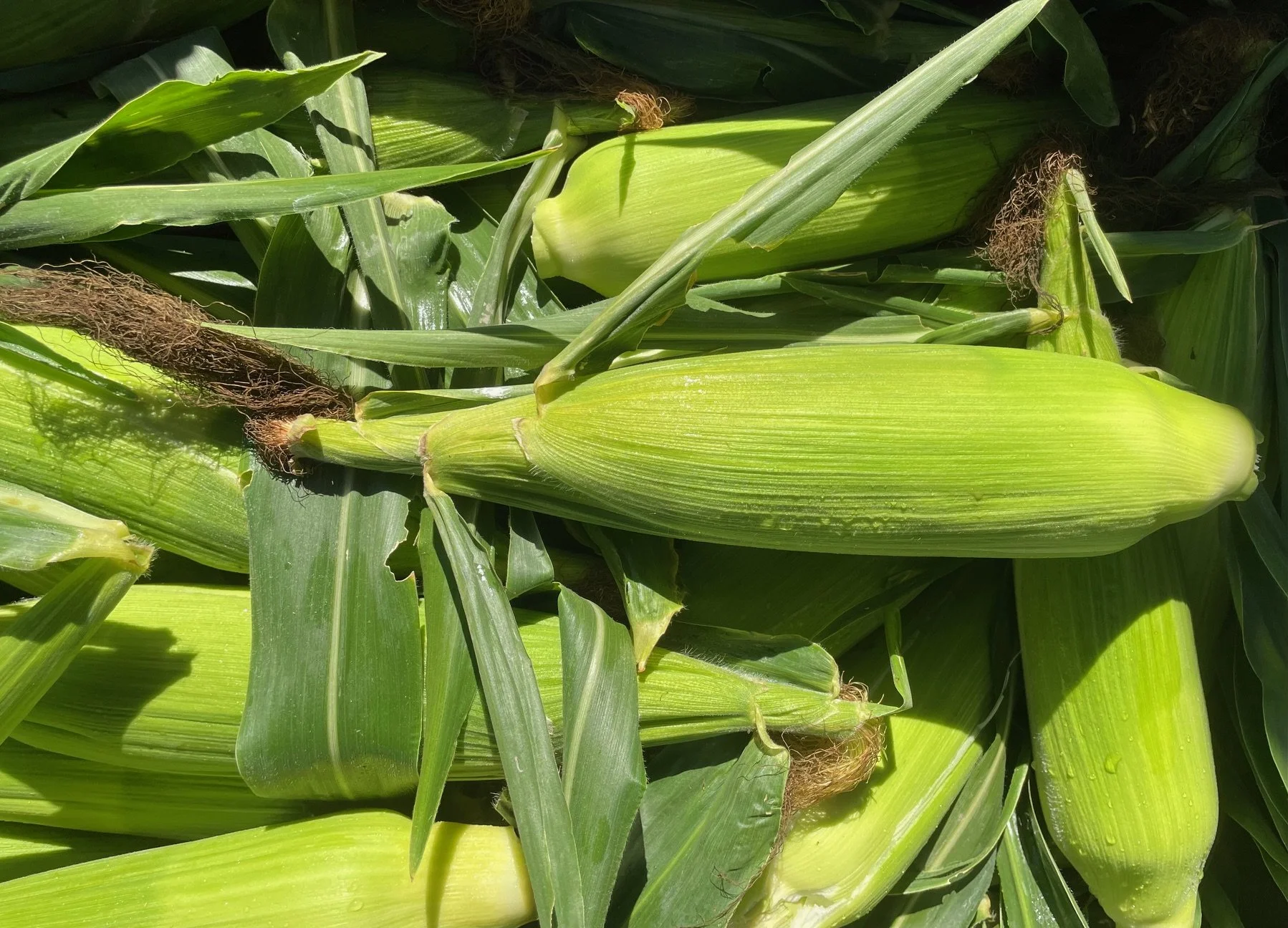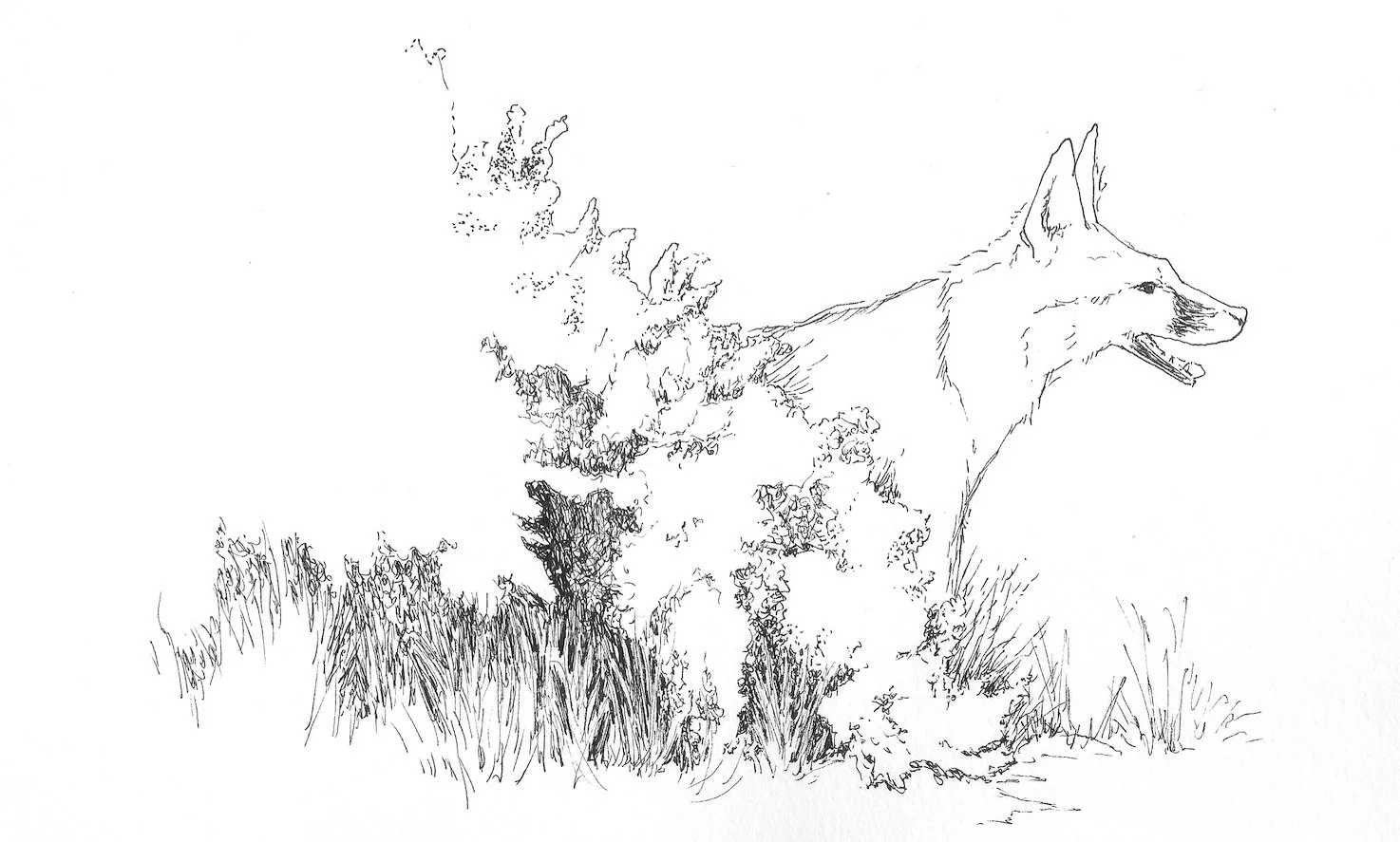THIS WEEK’S HARVEST
Bicolor Sweet Corn, Eggplant, Assorted Zucchini, Patty Pan & Crookneck Squash, Lemon Cucumbers, Striped Armenian Cucumbers, Tomatoes, Poblano Peppers, Fresh Cippollini Onions, Carrots, Sarah’s Choice Cantaloupe, Gatsbi Little Gem Lettuce, Assorted Head Lettuce, Escarole
U-PICK
Check the u-pick board in the barn for weekly u-pick limits.
Albion Strawberries | 2 pints per share
Cherry Tomatoes | 2 pint per share
Amethyst Beans | No Limit - Take what you’ll eat or preserve this week!
Frying Peppers:
Shishitos | No Limit - Take what you’ll eat or preserve this week!
Padróns | No Limit - Take what you’ll eat or preserve this week!
🌟 Jalapeños | 2 peppers per share
Herbs & Edible Flowers: Husk Cherries, Italian Basil, Purple Basil, Lemon Basil, Purple Basil, Dill, Tulsi, Parsley, Cilantro, Chamomile, Calendula, Borage, Nasturtium, Pansies/Viola, Stridolo, Lemon Bergamot Bee Balm, Onion Chives, Garlic Chives, Tarragon, Thyme, Oregano, Marjoram, Culinary Sage, Lemon Balm, Lemon Verbena, Vietnamese Coriander, Shiso/Perilla, Catnip, Pineapple Sage, Sorrel, Assorted Mints
Flowers! Too many to list! Feel free to pick the sunflowers along the edge of the parking area in addition to everything in the garden.
The zinnias were putting on a show at the 7:30 pm golden-hour this Wednesday.
HARVEST NOTES
Escarole: One of our favorite members of the chicory family, escarole looks like hearty lettuce. While it can be eaten raw in salad for those who aren’t afraid of a little bitterness, escarole really shines when sautéed, braised or in soup, as cooking highlights its velvety texture and savory depth. For the most simple preparation, try sautéing it in olive oil with plenty of garlic, Parmesan and lemon. It’s also delicious in Italian Wedding Soup, beans with sausage and escarole and Utica Greens.
Poblano Peppers: The poblano chili pepper is the beloved mild chili, originating in the state of Puebla, México that when dried it is called “ancho” or chili ancho and when roasted and stuffed with cheese becomes the magnificent chili relleno. This week will be offering the first taste of these wonderful peppers. For an easy, incredibly satisfying combo, try adding them to the Esquites recipe below!
Bicolor Sweet Corn: Sweet corn is a nutrient and space hungry crop, so it’s kind of a delicacy for us. But if you haven’t had this sweet corn from us before, it might be the best your’ve ever had. NOTE: Some ears may contain a caterpillar at the top — these are corn borers, and a totally normal (and unavoidable) part of organic sweet corn. Just toss the little guy outside and enjoy your corn!
Sarah’s Choice Cantaloupe: The best cantaloupe variety there is… period.
Striped Armenian Cucumbers: Sometimes called serpentine for their inventive, twisting shapes, these cucumbers are technically more closely related to melons! Their skins are very slightly fuzzy and so thin that they never need to be peeled, allowing you to highlight their beautiful stripes.
ESQUITES RECIPE
MEXICAN STREET CORN SALAD
Smoky, sweet, spicy, and tangy, esquites are the off-the-cob version of elotes—grilled on-the-cob Mexican street corn slathered with creamy, cheesy, lime-scented, chile-flecked sauce. Farmer’s note: This week we included chopped and charred poblano peppers and sweet cipollini onions in our Esquites for a delicious twist on the original recipe.
INGREDIENTS
2 tablespoons (30ml) vegetable oil
4 ears fresh corn, shucked, kernels removed (about 3 cups fresh corn kernels)
Kosher salt
2 ounces (60g) feta or Cotija cheese, finely crumbled
1/2 cup finely sliced scallions, green parts only
1/2 cup (1/2 ounce) fresh cilantro leaves, finely chopped
1 jalapeño pepper, seeded and stemmed, finely chopped
1 to 2 medium cloves garlic, pressed or minced on a Microplane grater (about 1 to 2 teaspoons)
2 tablespoons (30ml) mayonnaise
1 tablespoon (15ml) fresh lime juice from 1 lime
Chile powder or hot chile flakes, to taste
DIRECTIONS
Heat oil in a large nonstick skillet or wok over high heat until shimmering. Add corn kernels, season to taste with salt, toss once or twice, and cook without moving until charred on one side, about 2 minutes. Toss corn, stir, and repeat until charred on second side, about 2 minutes longer. Continue tossing and charring until corn is well charred all over, about 10 minutes total. Transfer to a large bowl.
Add cheese, scallions, cilantro, jalapeño, garlic, mayonnaise, lime juice, and chile powder and toss to combine. Taste and adjust seasoning with salt and more chile powder to taste. Serve immediately.
FARMER’S LOG
THE DOG DAYS OF SUMMER
The sun beats down, the hills are bleached gold, and the fruits of summer rain down… the dog days of summer are here.
The term “dog days”, for the late summer, comes from ancient Greece and Mediterranea where people associated the mid-July return of our brightest star, Canis Majoris (aka Sirius, aka “Orion’s Dog”), to the beginning of the hottest, sultriest days of late summer when, as Virgil put it, “the Dog-star cleaves the thirsty ground.” These ancient people associated the dog days of summer with grumpy humans, illness and fever, bad luck, and heat.
As the West Marin based naturalist Richard Vacha observes of our own Mediterranean climate in his book The Heart of Tracking, the dog days can also be an abundant, raucous, frolicking time for wild canines like coyotes, as they feast on fattened prey and the ripening fruit of late summer and as canine pups leave the den and come into their own. (Perhaps this is the wild origin of the naming of the star?)
In Mediterranean climates like ours, the dog days are also a scarce time, a spent time. They are the beginning of the great dry down in California and the great dormant period of our year.
“For a wild animal,” Vacha writes, the late summer and early fall “can be as tough to endure as an East Coast winter. Food is scarce, water is scarce, and green vegetation is crowded into riparian corridors, drawing the animals that depend on these resources closer together. The animals who prey upon them have shifted correspondingly. Territorial patterns are all in great flux as the expansive cycle of the summer season slowly winds down.”
“Fox in a Coyote Bush” illustration by Kayta from “The Heart of Tracking” by Richard Vacha from Mount Vision Press
On the farm, this shift into the dog days — their abundance and scarcity — is clear.
Our harvests are finally more and more heavy with fruit — melons tomatoes, peppers, eggplant, the first sweet corn. The wild blackberries are laden. The cherry plum tree in Farfield have just finished it’s annual downpour. That tree is a veritable watering hole for humans, crows, turkey, deer, and raccoons alike. In the garden, our first rounds of flowers and herbs are following the wild grasses and tapping out and throwing seed.
And in our staple field crops, if July was an outward explosion of verdant vegetation, the dog days are the beginning of the hunkering down, the drawing nigh, the focused inward stare toward the serious work of setting fruit, forming bulbs and tubers, and setting seed. Our verdant green acre of winter squash leaves are now starting to yellow as the sun battered plants focus on swelling their precious green and gold orbs in the shade below. Our verdant potato field is turning aswell, the plants doing important work in the soil below.
And as the wild lands surrounding the farm dry out and are scorched to gold, her wild inhabitants turn more and more to the farm — an irrigated green oasis — for moisture and succulent meals. The wild turkeys and their fluffy younglings visit the fields every morning and evening, snipping off hydrating bits of lettuce (they seem to love green romaine!). Gophers take bites out of our drip irrigation lines. Raccoons visit the melons and the sweet corn patches nightly for their midnight snacks. Good choice.
But the sweet relief of the first fall rains will come soon enough.
Until then, keep cool, move slow, remember to be nice, and enjoy the fruitful abundance as we enter the dog days of summer.
See you in the fields,
David
CSA BASICS
What time is harvest pick-up?:
Saturday harvest pick-ups run from 9:00 am - 2:00 pm
Tuesday harvest pick-ups will run from 1:00 pm - 6:00 pm
U-pick hours: Oriented members can come to the farm any time, 7 days a week, sunrise to sunset, to u-pick and enjoy the farm.
2025 CSA program dates: Our harvest season will run from Saturday, June 14th through Tuesday, December 9th this year.
Where is the farm? The member parking lot is located at 1720 Cooper Rd., Sebastopol, CA 95472.
Slow on Cooper Rd. Out of respect for our neighbors and the many kids and animals that live on Cooper Rd., please drive slow (20 mph)!





